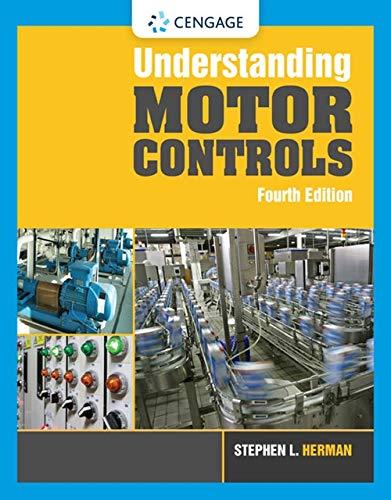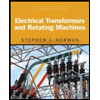TQ14:Allowed values for the quantum numbers of electrons are as follows: = 1,2,3,... 10, 1, 2, 3,....-1 m = 0, 1, 2, .... Relative to the subshells, 10 corresponds to an s subshell I=1 corresponds to a p subshell 1=2 corresponds to a d subshell 1=3 corresponds to an / subshell For the K shell, the four quantum numbers for each of the two electrons in the 1s state, in the order of nim.m, are 100(2) and 100(-) 100(-1/2) - Write the four quantum numbers for all the electrons in the L and M shells, and note which correspond to the s. p. and d subshells. TQ15:(a) Cite two important quantum-mechanical concepts associated with the Bohr model of the atom. (b) Cite two important additional refinements that resulted from the wave-mechanical atomic model. TQ16:Give the electron configurations for the following ions: P, P, Sn", Se, I, Ni, P and p. TQ17:Without using the periodic table, determine whether each of the following electron configurations is an inert gas, a halogen, an alkali metal, an alkaline earth metal, or a transition metal. Justify your choices. (a) 1s 2s 2p 3s3p (b) 1s 2s 2p 3s3p°3d°45° (c) 1s¯2s2p°3s°3p°3d'˚4s¯4p° (d) Is°2s/2p°3s¯3p°4s' (e) 1s 2s 2p 3s 3p 3d 4s 4p 4d 5s () 122p3s TQ18:(a) Briefly cite the main differences among ionic, covalent, and metallic bonding. (b) State the Pauli exclusion principle. TQ19:Determine the number of covalent bonds that are possible for atoms of the following elements: germanium, phosphorus, selenium, and chlorine. 1920 Compute the percentage ionic character of the interatomic bonds for TiO, and ZnTe using the periodic table of electronegativity below.
TQ14:Allowed values for the quantum numbers of electrons are as follows: = 1,2,3,... 10, 1, 2, 3,....-1 m = 0, 1, 2, .... Relative to the subshells, 10 corresponds to an s subshell I=1 corresponds to a p subshell 1=2 corresponds to a d subshell 1=3 corresponds to an / subshell For the K shell, the four quantum numbers for each of the two electrons in the 1s state, in the order of nim.m, are 100(2) and 100(-) 100(-1/2) - Write the four quantum numbers for all the electrons in the L and M shells, and note which correspond to the s. p. and d subshells. TQ15:(a) Cite two important quantum-mechanical concepts associated with the Bohr model of the atom. (b) Cite two important additional refinements that resulted from the wave-mechanical atomic model. TQ16:Give the electron configurations for the following ions: P, P, Sn", Se, I, Ni, P and p. TQ17:Without using the periodic table, determine whether each of the following electron configurations is an inert gas, a halogen, an alkali metal, an alkaline earth metal, or a transition metal. Justify your choices. (a) 1s 2s 2p 3s3p (b) 1s 2s 2p 3s3p°3d°45° (c) 1s¯2s2p°3s°3p°3d'˚4s¯4p° (d) Is°2s/2p°3s¯3p°4s' (e) 1s 2s 2p 3s 3p 3d 4s 4p 4d 5s () 122p3s TQ18:(a) Briefly cite the main differences among ionic, covalent, and metallic bonding. (b) State the Pauli exclusion principle. TQ19:Determine the number of covalent bonds that are possible for atoms of the following elements: germanium, phosphorus, selenium, and chlorine. 1920 Compute the percentage ionic character of the interatomic bonds for TiO, and ZnTe using the periodic table of electronegativity below.
Understanding Motor Controls
4th Edition
ISBN:9781337798686
Author:Stephen L. Herman
Publisher:Stephen L. Herman
Chapter44: Semiconductors
Section: Chapter Questions
Problem 2RQ: The atoms of a material used as an insulator generally contain ___________ valence electrons.
Related questions
Question

Transcribed Image Text:TQ14:Allowed values for the quantum numbers of electrons are as follows:
= 1,2,3,...
10, 1, 2, 3,....-1
m = 0, 1, 2, ....
Relative to the subshells,
10 corresponds to an s subshell
I=1 corresponds to a p subshell
1=2 corresponds to a d subshell
1=3 corresponds to an / subshell
For the K shell, the four quantum numbers for each of the two electrons in the 1s state, in the order of
nim.m, are 100(2) and 100(-)
100(-1/2) -
Write the four quantum numbers for all the electrons in the L and M shells, and note which correspond to the
s. p. and d subshells.
TQ15:(a) Cite two important quantum-mechanical concepts associated with the Bohr model of the atom. (b) Cite two
important additional refinements that resulted from the wave-mechanical atomic model.
TQ16:Give the electron configurations for the following ions: P, P, Sn", Se, I, Ni, P and p.
TQ17:Without using the periodic table, determine whether each of the following electron configurations is an inert
gas, a halogen, an alkali metal, an alkaline earth metal, or a transition metal. Justify your choices.
(a) 1s 2s 2p 3s3p (b) 1s 2s 2p 3s3p°3d°45° (c) 1s¯2s2p°3s°3p°3d'˚4s¯4p° (d) Is°2s/2p°3s¯3p°4s'
(e) 1s 2s 2p 3s 3p 3d 4s 4p 4d 5s () 122p3s
TQ18:(a) Briefly cite the main differences among ionic, covalent, and metallic bonding.
(b) State the Pauli exclusion principle.
TQ19:Determine the number of covalent bonds that are possible for atoms of the following elements: germanium,
phosphorus, selenium, and chlorine.
1920 Compute the percentage ionic character of the interatomic bonds for TiO, and ZnTe using the periodic table
of electronegativity below.
Expert Solution
This question has been solved!
Explore an expertly crafted, step-by-step solution for a thorough understanding of key concepts.
Step by step
Solved in 2 steps with 2 images

Recommended textbooks for you

Understanding Motor Controls
Mechanical Engineering
ISBN:
9781337798686
Author:
Stephen L. Herman
Publisher:
Delmar Cengage Learning

Automotive Technology: A Systems Approach (MindTa…
Mechanical Engineering
ISBN:
9781133612315
Author:
Jack Erjavec, Rob Thompson
Publisher:
Cengage Learning

Electrical Transformers and Rotating Machines
Mechanical Engineering
ISBN:
9781305494817
Author:
Stephen L. Herman
Publisher:
Cengage Learning

Understanding Motor Controls
Mechanical Engineering
ISBN:
9781337798686
Author:
Stephen L. Herman
Publisher:
Delmar Cengage Learning

Automotive Technology: A Systems Approach (MindTa…
Mechanical Engineering
ISBN:
9781133612315
Author:
Jack Erjavec, Rob Thompson
Publisher:
Cengage Learning

Electrical Transformers and Rotating Machines
Mechanical Engineering
ISBN:
9781305494817
Author:
Stephen L. Herman
Publisher:
Cengage Learning